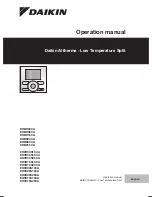
DEVICENET
vacon • 5
24-hour s358 (0)40 837 1150 • Email: [email protected]
3.
DEVICENET
3.1
Introduction
DeviceNet is an open network based on CAN that is designed to connect low cost industrial control
devices (such as limit switches, photoelectric sensors, motor starters, process sensors, frequency
converters, panel displays and operator interfaces) to a network and eliminate expensive hardwiring.
The direct connectivity provides improved communication between devices as well as important
device-level diagnostics not easily accessible or available through hardwired I/O interfaces.
The DeviceNet Model is application independent; it provides the communication services needed by
various types of applications.
Many of today’s lower level industrial control devices must retain their low cost/low resource
characteristics even when directly connected to a network. DeviceNet takes this into consideration by
defining a specific instance of the Model for communications typically seen in a Master/Slave
application. This is referred to as the Predefined Master/Slave Connection Set.
DeviceNet allows the interchangeability of simple devices while making interconnectivity for more
complex devices possible. In addition to reading the state of discrete devices, DeviceNet provides the
capability to report temperatures, to read the load current in a motor starter, to change the
deceleration rate of drives, or to count the number of packages that have passed on a conveyor in the
previous hour.
3.2
DeviceNet physical layer and media
The basic trunkline-dropline topology provides separate twisted pair busses for both signal and
power distribution. Thick or thin cable can be used for either trunklines or droplines. End-to-end
network distance varies with data rate and cable size.
Devices can be powered directly from the bus
and
communicate with each other using the same
cable.
Nodes can be removed or inserted from the network without powering down the network.
Power taps can be added at any point in the network which makes redundant power supplies
possible. The trunkline current rating is 8 amps. An opto-isolated design option allows externally
powered devices (e.g. AC drives starters and solenoid valves) to share the same bus cable. Other
CAN-based networks allow only a single power supply (if at all) for the entire network.
Figure 3- 1. Thick or thin cable can be used for either trunklines or droplines
Node
Node
Node
Node
Node
Node
Node
Node
Node
Node
Tap
Trunk line
Drop line
Terminator
Terminator
Node
Node
Node
Zero drop
Short drops
Содержание NX OPTC7
Страница 1: ...vacon nx ac drives optc7 devicenet option board user manual ...
Страница 51: ......






































